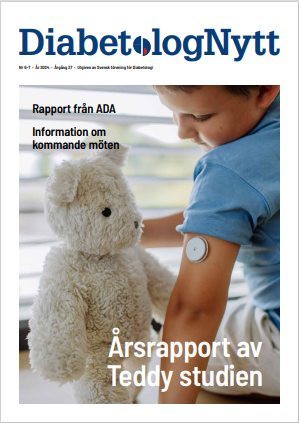Compared with diabetes patients aged 45-64 years, those 80 years or older were 2.5 times more likely to present to the emergency department with an insulin adverse event (34.9 vs. 13.7/1,000 insulin-treated diabetes patients) and about five times more likely to be emergently hospitalized for such an event (16.1 vs. 3.3/1,000 persons).
”These data support setting glycemic targets based on risk/benefit,” Dr. Andrew I. Geller of the Centers for Disease Control and Prevention said at the annual scientific sessions of the American Diabetes Association.
|
|
|
Patrice Wendling/IMNG Medical Media Dr. Andrew Geller
|
National guidelines are evolving in that direction. Earlier this year, the ADA recommended that older adults who are ”functional, cognitively intact, and have significant life expectancy” should not have glycemic targets different from those of younger adults, but acknowledged that for some older adults, glycemic targets ”might reasonably be relaxed, using individual criteria.”
The American Association of Clinical Endocrinologists Diabetes Management Algorithm 2013 says that a hemoglobin A1c level ”of 6.5% or less is still considered optimal if it can be achieved in a safe and affordable manner,” but adds that the HbA1c target ”must be individualized, based on numerous factors, such as age.”
Dr. Geller suggested that reducing insulin adverse events in older adults may have a significant public health impact. Insulin is the most commonly implicated medicine in U.S. ED visits, and it’s linked to about 14,000 hospitalizations annually among adults 65 years or older. Insulins and synthetic analogues also accounted for 71% of spending growth on antidiabetes medications in 2011.
Dr. Geller and his colleagues estimated annual insulin use frequency with National Health Interview Survey data, and annual insulin adverse events with data from the National Electronic Injury Surveillance System–Cooperative Adverse Drug Event Surveillance (NEISS-CADES), an ongoing public health surveillance project based on chart abstraction, not ICD codes.
Insulin adverse events were defined as supratherapeutic effects (hypoglycemia) and therapeutic misadventures (for example, errors). Allergic reactions, local effects, and accidental exposure were excluded.
Insulin adverse events led to an estimated 97,745 emergency department visits annually from 2007 to 2011, accounting for 6.5% of all adverse drug event–related ED visits, Dr. Geller said.
While the sample had a slight predominance of males (50.4%) and a majority of whites (60.5%), there was no difference in rates among genders or races.
Patients aged 45-64 years had the highest proportion of ED visits (35%), followed by those 65-79 years (25.3%), 18-44 years (21.7%), 80 years or older (15.8%), and younger than 18 years (2.1%).
Still, patients 80 years or older had a rate of 34.9 ED visits per 1,000 diabetic persons, far surpassing rates observed among those younger than 18 years (13.7), 18-44 years (24.3), 45-64 years (13.7), and 65-79 years (16.3).
Patients aged 65-79 years had the highest proportion of hospitalizations (32.9%), but once again, those 80 years and older had the highest rate of hospitalizations per 1,000 diabetic persons (16.1), compared with the other age groups: younger than 18 years (2.5), 18-44 years (3.9), 45-64 years (3.3), and 65-79 years (6.2).
Based on clinical and laboratory findings, about 65% of patients presented with shock, loss of consciousness, or seizure (23.2%); fall or other injury (5%); and altered mental status (37%), Dr. Geller said. More than half of patients had a blood glucose level less than 50 mg/dL.
More than half (56%) of patients received intravenous dextrose or glucagon during their ED visit, while 29.3% of visits overall resulted in hospitalization, he said.
Precipitating factors were documented in about 21% of charts. The three most common were:
• Meal-related factors in 45.6%, such as a 19-year-old driver who took insulin 2 hours before hitting a tree, but had ”no time to eat.”
• Product mix-ups in 22%, including a 51-year-old injected by his spouse with 50 U of NovoLog instead of 50 U of Lantus.
• Incorrect dose or units in 12%, such as a 62-year-old who took 40 U of regular insulin instead of 4.
In cases where the patient took the wrong type of insulin, 52.3% of mix-ups involved a patient taking a rapid-acting agent instead of a long-acting one, Dr. Geller said.
”Perhaps the burden of insulin adverse events may be impacted by targeting at-risk individuals such as older adults, bolstering diabetes education such as meal planning, and minimizing the risk of product mix-ups, perhaps through packaging,” he concluded.
Dr. Geller reported having no relevant financial disclosures.
From http://online.liebertpub.com
Nyhetsinfo
www red DiabetologNytt






